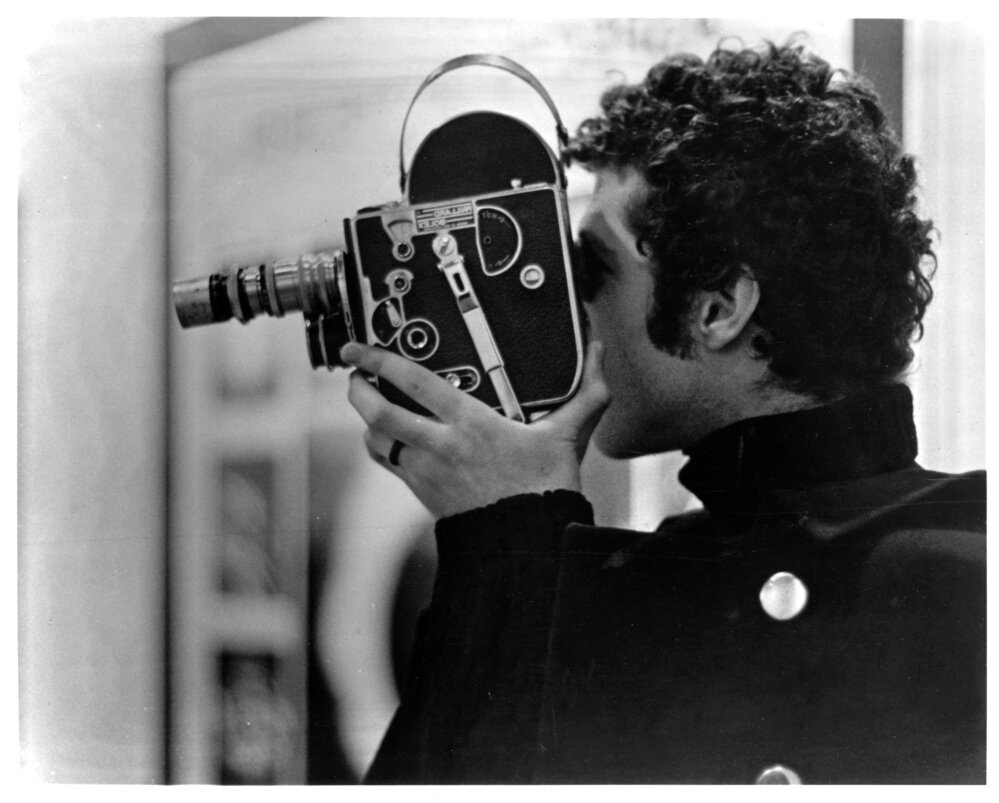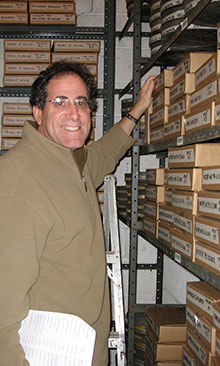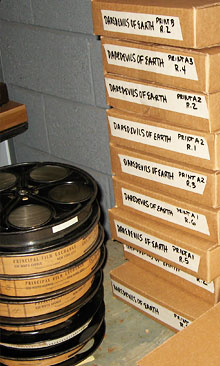Welcome to My Blog!
/As I survey the New York City cultural movie scene, numerous events prompt memories from innumerable work projects and special moments throughout my career. The launch of this “Curator’s Corner” space is meant as a more free-form way for me to write about such memories. For those of you unfamiliar with my professional background, let’s begin with my career biography, here: https://www.gartenbergmedia.com/about/jon-gartenberg-profile
Trained as a professional archivist – first working in MOMA’s Department of Film, then at Broadway Video and Golden Books Family Entertainment, and now through my own company (Gartenberg Media Enterprises), I have worked extensively on identifying, cataloguing, and restoring celluloid film collections.
16mm Format Experimental and Independent Films:
The photograph below symbolizes my extensive work in archiving, preserving, and programming the work of experimental and independent filmmakers, who preferred format of production was in 16mm celluloid. This includes projects restoring the films of Andy Warhol -- https://www.gartenbergmedia.com/programming-currating#andy-warhol-- as well as those of experimental artist Warren Sonbert -- https://www.gartenbergmedia.com/programming-currating#warren-sonbert-retrospective
L. Curator Jon Gartenberg holding a 16mm film reel, seated in front of an abstract painting. R. Warren Sonbert, filming with his Bolex camera
35mm Motion Picture Films:
Early on in my career at MOMA, I worked on restoring D.W. Griffith’s movies. Between 1908 and 1913, he directed more than 400 short fiction films. We generated gorgeous new 35mm prints from the original negatives. The resultant black-and-white films were of such beautiful quality that the fine strands of Lillian Gish’s hair were as sharply etched as the individual leaves of the trees fluttering in the breeze. In 1987, I showed Lillian Gish her first film (AN UNSEEN ENEMY) in which she had starred in 1912. At one point, she said aloud (referring to her own performance), “she didn’t turn her back properly”. It was an amazing moment for me to experience in person how this sublime actress objectified her own performance 75 years later.
At Broadway Video, Lorne Michaels purchased the copyrights to the television programs LASSIE,THE LONE RANGER, and UNDERDOG. My first task was to organize the 35mm assets by episode title – including 592 LASSIEs and 221 THE LONE RANGERs, as well as to link the video masters of these shows to their corresponding celluloid assets, in preparation for their international distribution.
Now, in my own company, a significant thread of my work has involved rescuing from dead warehouse storage commercial films which were produced in 35mm celluloid format. We then organize, inspect, and catalogue the physical elements, subsequently repatriating these collections to film archives worldwide.
L. Jon Gartenberg in film vaults, preparing boxes containing reels of 35mm celluloid films that were acquired by the Packard Humanities Institute for long-term storage and exhibition. See article, here: https://static1.squarespace.com/static/52afa15ce4b042c7f0089b22/t/54c3f8d6e4b03dfa2a2f471a/1422129366829/San-Jose-Mercury-News.pdf
R. Photograph of nitrate reels of DAREDEVILS OF EARTH, a.k.a. MONEY FOR SPEED (1933, Great Britain), directed by Bernhard Vorhaus, edited by David Lean, and starring a 15-year old Ida Lupino. (Lean can also be seen playing a reporter in the commentary box in the race scenes
In 1992, Money for Speed was included in the BFI's Missing Believed Lost project (edited by David Meeker), a list of 100 lost British feature films that it was hoped could somehow be recovered. Eventually two prints were found, one dubbed into French and the other with German subtitles. Subsequent to this, we identified in abandoned warehouse storage multiple vintage US distribution prints that appear to constitute the best quality material recovered on a global basis.





